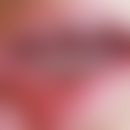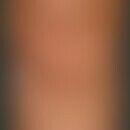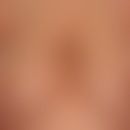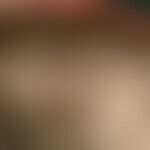Synonym(s)
HistoryThis section has been translated automatically.
DefinitionThis section has been translated automatically.
Ripping out one's own head or body hair in the sense of self-stimulation and autoaggression. With younger children, the habit, similar to nail biting or thumb sucking, is more likely to be seen as a "pleasurably experienced calming effect" before falling asleep or watching television.
You might also be interested in
Occurrence/EpidemiologyThis section has been translated automatically.
Lifetime prevalence 0.5-1.5% in boys and up to 3% in girls.
EtiopathogenesisThis section has been translated automatically.
It is also possible as a result of obsessive-compulsive disorders, larvae depression, anxiety disorders, appetence aversion disorders or other psychiatric clinical pictures with impulse disorders.
ManifestationThis section has been translated automatically.
Trichotillomania is most frequently observed between the ages of 5 and 12.
LocalizationThis section has been translated automatically.
Predominantly located on the scalp hair, more rarely on the pubic hair. Eyebrows or eyelashes are affected in 25% of cases.
ClinicThis section has been translated automatically.
Circumscribed, usually blurred bald patches (tonsure-like) in the area of the head and/or body hair. More rarely, several areas of alopecia are present. The scalp itself is inconspicuous. The hair follicles are always present in the focus (differentiation from scarring alopecia). Short hair shafts always remain (typical sign and differentiation from alopecia areata). Their length is determined by the ability to exert sufficient traction. Short hair cannot be captured. Long hair is pulled out, which is usually twirled over a longer period of time beforehand.
Follicular hemorrhages may be detectable.
Combination with trichophagia is possible. Complication due to ingestion of hair: trichobezoars = balls of hair that accumulate in the stomach as indigestible balls of wool)
HistologyThis section has been translated automatically.
DiagnosisThis section has been translated automatically.
Trichogram: the telogen rate is reduced.
Microscopy: trichoptilosis with greenwood fractures and trichorrhexis nodosa-like hair breakage.
TherapyThis section has been translated automatically.
- Difficult. With children, the parents or the social environment must be informed and involved in the therapy.
- Psychological or psychiatric counselling and therapy if necessary.
- With small children, radical short cutting of the head hair can break the hair-pulling tic.
Note(s)This section has been translated automatically.
The term "Trichotillomania" is composed of the Greek: Trix = hair, tillein= pulling out, mania= mania.
LiteratureThis section has been translated automatically.
Falkenstein MJ et al (2015) Race/Ethnicity and Treatment Outcome in a Randomized Controlled Trial for Trichotillomania (Hair-Pulling Disorder). J Clin Psychol doi: 10.1002/jclp.22171
Hallpeau H (1889) Alopecie par grattage (trichomania or trichotillomania). Ann Dermatol Syphiligr 10: 440-446
- Hautmann G (2002) Trichotillomania. J Am Acad Dermatol 46: 807-821
- Mazuecos J et al (2001) Pubic trichotillomania in an adult man. Br J Dermatol 145: 1034-1035
- Menon V et al (2015) Very early onset trichotillomania presenting with recurrent trichobezoar: conventional wisdom questioned. Int J Trichology 7:36-37
- Papadopoulos AJ (2003) Trichotillomania. Int J Dermatol 42: 330-334
- Wade MS (2002) Disorders of hair in infants and children other than alopecia. Clin Dermatol 20: 16-28
- Walsh KH et al (2001) Trichotillomania. Presentation, etiology, diagnosis and therapy. At J Clin Dermatol 2: 327-33
Incoming links (18)
Acrodyny; Artifacts; Artifacts; Hair pulling; Hair pulling tic; Hair-pulling tic; Hallopeau, francois henri; Hypotrichosis; Onychophagia; Para-artefacts; ... Show allDisclaimer
Please ask your physician for a reliable diagnosis. This website is only meant as a reference.










